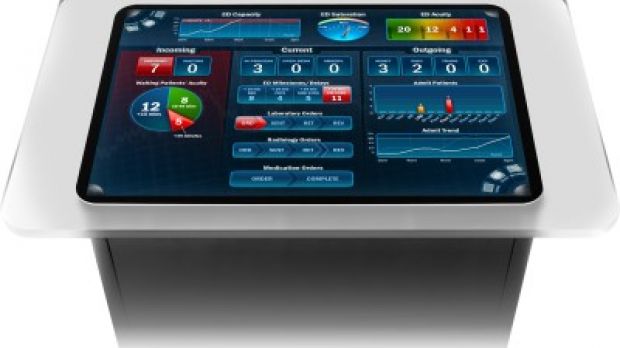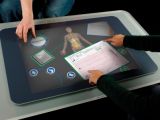Surface computing can help members of the healthcare industry stand out from the crowd, Microsoft has revealed at the Healthcare Information and Management Systems Society (HIMSS) 2009 conference in Chicago. The Redmond company is literally putting a digital touch on healthcare, by demoing application prototypes designed to run on top of Microsoft Surface. The apps can have a variety of purposes, from streamlining and enhancing patient-doctor interactions, to contributing to children rehabilitation programs and disaster management.
“We thought Microsoft Surface offered real value to emergency departments, in-patient and ambulatory care, and children’s hospital environments,” Randy Fusco, chief technology officer for Microsoft’s Health & Life Sciences Provider Industry in the U.S, explained. “Patients have a choice where they receive care, and healthcare systems are looking for innovative ways to differentiate themselves around patient experience. Microsoft Surface can help healthcare providers do that.”
One of the prototypes has been put together by Texas Health Resources and Infusion Development, and it involves a Microsoft Surface application complete with images, videos, diagrams, and health records that doctors can use in order to enhance their relationship with the patient.
“From the first time I saw Microsoft Surface, I thought it was just made for healthcare,” Dr. Bill Crounse, worldwide health senior director for Microsoft, added. “It doesn’t feel like you’re using a computer – it’s much more intuitive and easy to use, for both patients and doctors.”
The Operational Visibility Engine is yet another application designed to run on top of Surface. Created by MEDHOST, the Operational Visibility Engine will act as a filter for patients to be attended to in the case of a medical emergency.
“In my experience, when there is a disaster you have a handful of patients about whom you need to make very quick decisions related to their treatment and finding a bed for them. With this application a doctor or nurse can look at all the patients coming in and decide how best to handle them, rather than dealing with them one at a time in typical triage,” Patricia Daiker, vice president of marketing for MEDHOST, commented.
Thanks to a collaboration between Vectorform and the Cook Children’s Health System in Fort Worth, Texas, Microsoft Surface can also be used for children rehab tasks, including actions as simple as drawing. “We computerize that,” Tim McKendrick, a senior project manager with Vectorform, stated. “The caregiver can create their own tests on Microsoft Surface using its drawing capability, set their own parameters for success, and easily repeat the test and track the child’s progress.”

 14 DAY TRIAL //
14 DAY TRIAL // 
